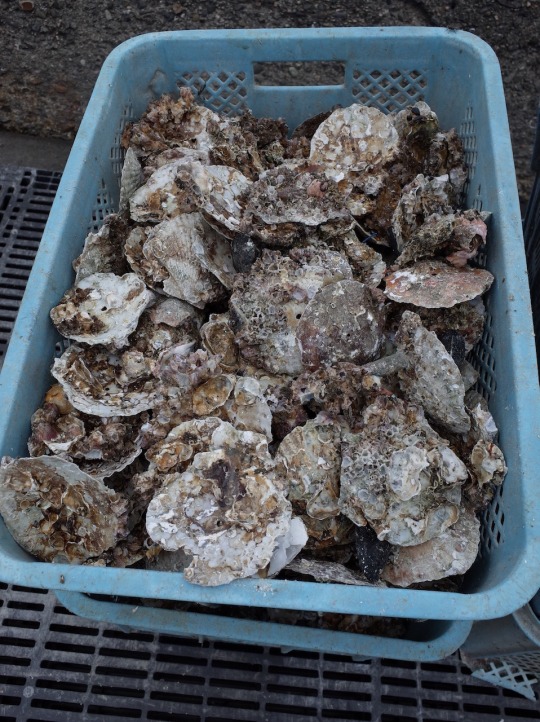#oyster farming
Text
"Discarded shells from restaurants and hotels are being used to restore damaged oyster ecosystems, promote biodiversity and lower pollution in the city’s bays...
Nestled in between the South China Sea and the Pearl River Delta, Hong Kong has been seen historically as an oyster hotspot. “They have been supporting our livelihood since ancient times,” says Anniqa Law Chung-kiu, a project manager at the Nature Conservancy (TNC) in Hong Kong. “Both oysters and their shells are treasures to humans.”
Over the past five decades, however, the city’s sprawling urban development, water pollution, as well as the over-harvesting and frequent seafloor dredging by the lime industry – which uses the crushed shells to make construction material – have destroyed Hong Kong’s oyster habitats and made the waters less hospitable for biodiversity.
The more oyster colonies falter, the worse the problem gets: oysters are filter feeders and purify water by gobbling up impurities. Just one Hong Kong oyster can filter up to 200 litres of water a day, more than any other known oyster species. But decades of rapid industrialisation have largely halted their water-purifying services.
The depletion of Hong Kong’s natural oyster reefs also affects the ability of local farmers to sustainably cultivate their oysters in a healthy environment, denting the reputation of the city’s 700-year oyster farming tradition, designated by Unesco as an “intangible cultural heritage”.
Inhabitants of the coast feel abandoned, says Ken Cheng Wai-kwan, the community leader of Ha Pak Nai on Hong Kong’s Deep Bay, facing the commercial city of Shenzhen in China. “This place is forgotten,” Cheng says. “Oysters have been rooted here for over 400 years. I ask the question: do we want to lose it, or not?”
A group of activists and scientists are taking up the challenge by collecting discarded oyster shells and recycling them to rebuild some of the reefs that have been destroyed and forgotten in the hope the oysters may make a comeback. They’ve selected locations around the island where data they’ve collected suggests ecosystems still have the potential to be rebooted, and there are still enough oyster larvae to recolonise and repopulate reefs. Ideally, this will have a positive effect on local biodiversity as a whole, and farming communities.
Farmers from Ha Pak Nai were among the first to hand over their discarded shells to the TNC team for recycling. Law’s team works with eight oyster farmers from Deep Bay to recycle up to 10 tonnes of shells every year [over 22,000 pounds]. They collect an average of 870kg every week [over 1,900 pounds] from 12 hotels, supermarkets, clubhouses and seafood restaurants in the city, including some of its most fashionable establishments. About 80 tonnes of shells [over 176,000 pounds] have been recycled since the project began in 2020.
Restaurants will soon be further incentivised to recycle the shells when Hong Kong introduces a new fee for waste removal – something that is routine in many countries, but only became law in Hong Kong in July and remains controversial...
Preliminary data shows some of the restored reefs have started to increase the levels of biodiversity, but more research is needed to determine to what extent they are contributing to the filtering of the water, says Law.
Scientists from the City University of Hong Kong are also looking to use oyster shells to increase biodiversity on the city’s concrete seawalls. They hope to provide tiny, wet shelter spots around the seawall in which organisms can find refuge during low tide.
“It’s a form of soft engineering, like a nature-based solution,” says Charlene Lai, a research assistant on the team."
-via The Guardian, December 22, 2023
#oyster#oyster farming#sea shells#seafood#hong kong#ecosystem restoration#biodiversity#ecosystem#water pollution#clean water#cultural heritage#marine life#marine animals#marine science#good news#hope
795 notes
·
View notes
Text

Guide To Oyster Farming
---
Source: "The Book"
4 notes
·
View notes
Text
Oyster Farming Cages Supplier
Oyster Farming Cages Supplier Hexcyl Oyster baskets and shellfish baskets offer a complete growing size range for adjustable long line oyster farming and intertidal oyster farming.lets us help you with all of your oyster growing needs!
0 notes
Link
ghost nests, oyster farms ... in hong kong
(source: national geographic | 15 aug 2022)
0 notes
Text
Photos of the Day: Mangrove Oysters - from source to market, The Gambia. Images ©Jason Florio
Photos of the Day: Mangrove Oysters – from source to market, The Gambia. Images ©Jason Florio
Going back hundreds of years, along this coastline, people have collected oysters from the tentacles of the mangroves, which flank River Gambia…the tributaries are great sites for the oysters to grow. Oyster harvesting is traditionally a female-driven process – from collection, preparation, to selling of the oysters… hear more from Jason Florio as he talks to Neal James of Photography Daily…
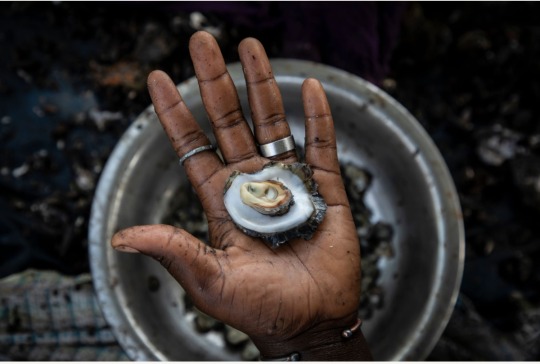
View On WordPress
0 notes
Text
History of Oysters on the Islands
History of Oysters on the Islands
Sandy Beach Oysters on the rocks Russell island
The Islands have a rich history of Oysters. Southern Moreton Bay Islands | Redland City Council (Pdf can be downloaded here)
An 1884 map shows oyster leases 19, 40, 16 and 18 around Macleay and Lamb Islands. Oystering was biggest fishery in southern Queensland for years; at its peak the industry employed about 200 people.Lamb Island – One of the…

View On WordPress
0 notes
Text
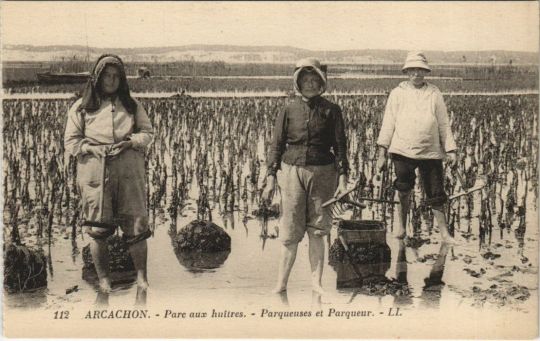
Oyster farm in Arcachon, Gascony region of southwestern France
French vintage postcard
#tarjeta#postkaart#sepia#historic#france#oyster#photo#farm#southwestern#postal#briefkaart#photography#arcachon#vintage#ephemera#ansichtskarte#old#postcard#french#region#gascony#postkarte#carte postale
4 notes
·
View notes
Text
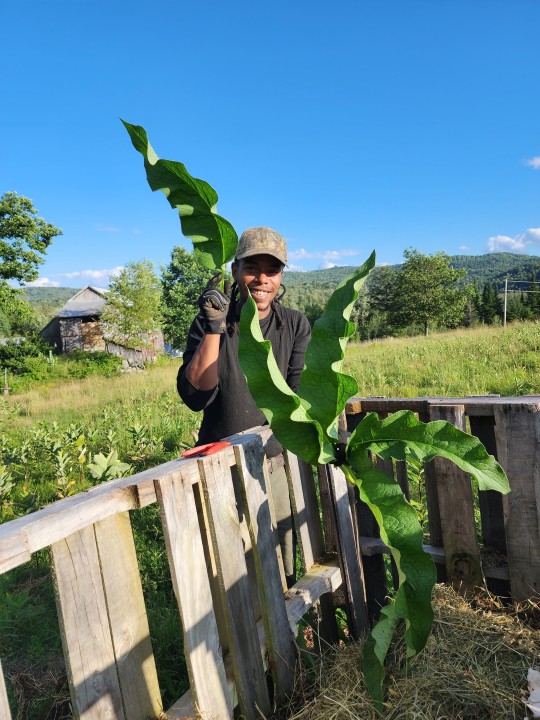




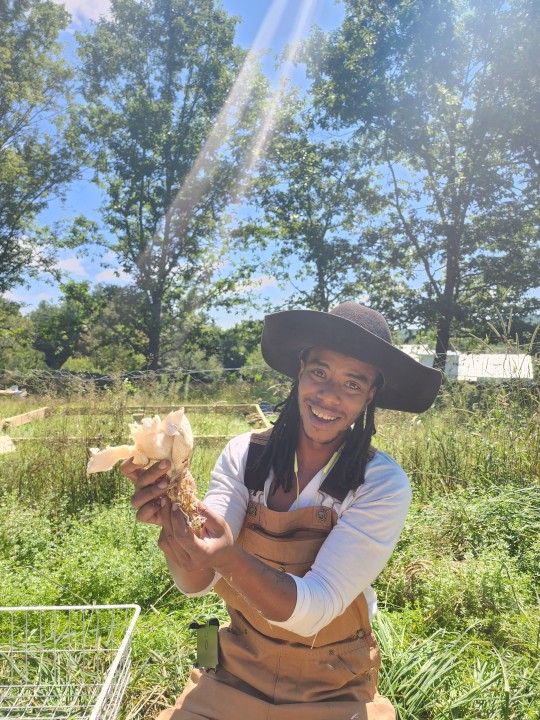
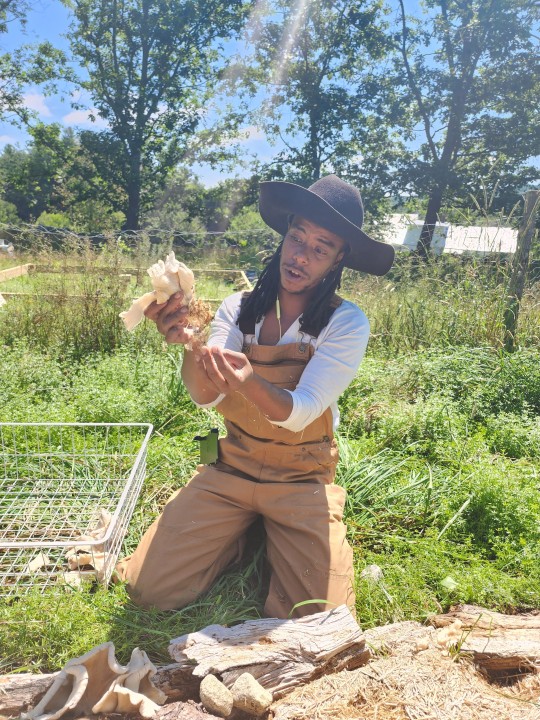
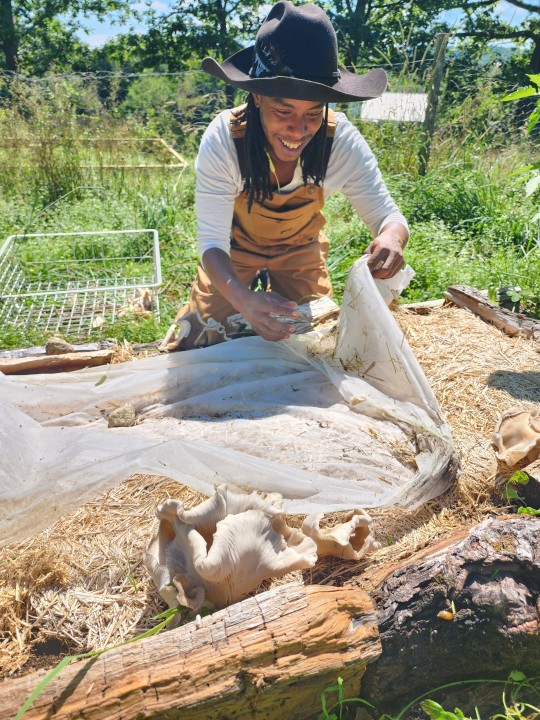
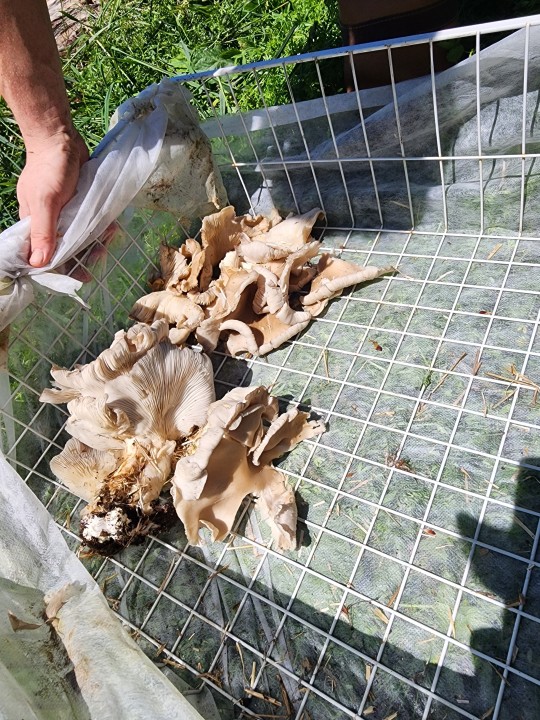
A nice flush of outdoor oyster mushrooms, a good memory from this summer as the w ather gets a lil nasty right now. Love the snow, hate the soggy. Love the warmth, hate the climate change implications.
Looking forward to figuring out basement mushrooms for year round production. Provided the basement isn't constantly filled with at least an inch of water.
KX
5 notes
·
View notes
Link
#article#podcast#podcasts#Hakai Magazine#oyster farms#farms#farming#NIMBY#water rights#climate change#flood protection#floods#coast#seafood#sustainability
12 notes
·
View notes
Text
"When Francois Beyers first pitched the concept of 3D ocean farming to the Welsh regulators, he had to sketch it on napkins.
Today the seafood farm is much more than a drawing, but if you walked along the Welsh coastal path near St David’s, all you’d see is a line of buoys. As Beyers puts it: “It’s what’s below that’s important.”
Thick tussles of lustrous seaweed suspend from the buoys, mussels cling to its furry connective ropes and dangling Chinese lantern-esque nets are filled with oysters and scallops.
“It’s like an underwater garden,” says Beyers, co-founder of the community-owned regenerative ocean farm, Câr-y-Môr. The 3-hectare site is part of a fledgling sector, one of 12 farms in the UK, which key players believe could boost ocean biodiversity, produce sustainable agricultural fertiliser and provide year-round employment in areas that have traditionally been dependent on tourism.
Created in 2020 by Beyers and six family members, including his father-in-law – an ex-shellfish farmer – the motivation is apparent in the name, which is Welsh for “for the love of the sea”. ...
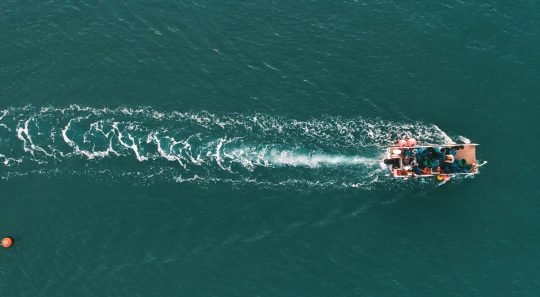
Pictured: Drone shot of Câr-y-Môr, which is on the site of abandoned mussel farms. Image: Scott Chalmers
Ocean farming comes from the technical term ‘integrated multi-trophic aquaculture’, which means a mixture of different seaweed and shellfish species growing together to mutually benefit each other. But it’s not just a way of growing food with little human input, it also creates ocean habitat.
“You’re creating a breeding ground for marine animals,” explains Beyers who adds that the site has seen more gannets diving, porpoises and seals – to name a few – since before the farm was established.
Ocean farms like Câr-y-Môr, notes Ross Brown – environmental research fellow at the University of Exeter – have substantial conservation benefits.
“Setting up a seaweed farm creates an exclusion zone so fishermen can’t trawl it,” explains Brown, who has been conducting experiments on the impacts of seaweed and shellfish farms across the UK.
Brown believes a thriving ocean farming industry could provide solutions to the UK’s fish stock, which is in “a deeply troubling state” according to a report that found half of the key populations to be overfished. “It would create stepping stones where we have safe havens for fish and other organisms,” he adds.
But UK regulators have adopted a cautious approach, note Brown and Beyers, making it difficult for businesses like Câr-y-Môr to obtain licenses. “It’s been a tough old slog,” says Beyers, whose aim is to change the legislation to make it easier for others to start ocean farms.
Despite navigating uncharted territories, the business now has 14 full-time employees, and 300 community members, of which nearly 100 have invested in the community-benefit society. For member and funding manager Tracey Gilbert-Falconer, the model brings expertise but most importantly, buy-in from the tight-knit local community.
“You need to work with the community than forcing yourself in,” she observes.
And Câr-y-Môr is poised to double its workforce in 2024 thanks to a Defra grant of £1.1 million to promote and develop the Welsh seafood industry as part of the UK Seafood Fund Infrastructure Scheme. This will go towards building a processing hub, set to be operational in April, to produce agricultural fertiliser from seaweed.
Full of mineral nutrients and phosphorous from the ocean, seaweed use in farming is nothing new, as Gilbert-Falconer notes: “Farmers in Pembrokeshire talk about their grandad going down to the sea and throwing [seaweed] on their farms.”
But as the war in Ukraine has caused the price of chemical fertiliser to soar, and the sector tries to reduce its environmental impact – of which synthetic fertiliser contributes 5% of total UK emissions – farmers and government are increasingly looking to seaweed.
The new hub will have capacity to make 65,000 litres of sustainable fertiliser annually with the potential to cover 13,000 acres of farmland.
But to feed the processing hub, generate profit and reduce their dependency on grants, the co-op needs to increase the ocean farm size from three to 13 hectares. If they obtain licences, Beyers says they should break even in 18 months.
For now, Beyers reflects on a “humbling” three years but revels in the potential uses of seaweed, from construction material to clothing.
“I haven’t seen the limit yet,” he smiles."
-via Positive.News, February 19, 2024
#wales#welsh#ocean#marine biology#aquaculture#marine life#marine animals#seaweed#sea scallops#oysters#united kingdom#uk#conservation#conservation news#overfishing#environmental news#farming#sustainable agriculture#sustainability#ocean farming#good news#hope
471 notes
·
View notes
Text
someone is on my pliny oysters post trying to explain to me that you can harvest pearls without killing the oyster and their header says ‘no tony stark antis.’ if i could introduce pliny to any living person i want it to be them.
#‘they have a job for this it’s called oyster farming’ are you telling me or pliny bc both of us are aware yeah#animalia
10 notes
·
View notes
Text
doing an unhinged amount of research for a fic for the first time in years. nature is truly healing
#this used to be my favorite part of writing for so long and then suddenly i just like Could Not make myself do it for like. 3 years. like#doing any kind of research gave me actual anxiety. but we're back now baby#anyways i am writing this post 47 pages deep into a manual for pacific oyster pearl farming and truly having the time of my life.#living laughing loving about it#writing
3 notes
·
View notes
Text
my favourite on going bit is talking about celebrities I find attractive and leading it back to living with them on an oyster farm
2 notes
·
View notes
Text
Photography Daily Show PhotoWalk #300: African Adventures - The Incredible Oyster Ladies of The Gambia
Photography Daily Show PhotoWalk #300: African Adventures – The Incredible Oyster Ladies of The Gambia
Going back hundreds of years, along this coastline, people have collected oysters from the tentacles of the mangroves, which flank River Gambia…the tributaries are great sites for the oysters to grow. Oyster harvesting is traditionally a female-driven process – from collection, preparation, to selling of the oysters… hear more from Jason Florio as he talks to Neal James of Photography Daily…

View On WordPress
#documenting Gambia#everydayGambia#Neale James#oyster farming#oyster women#River Gambia#The Gambia#The Photography Daily Show#West Africa
0 notes

